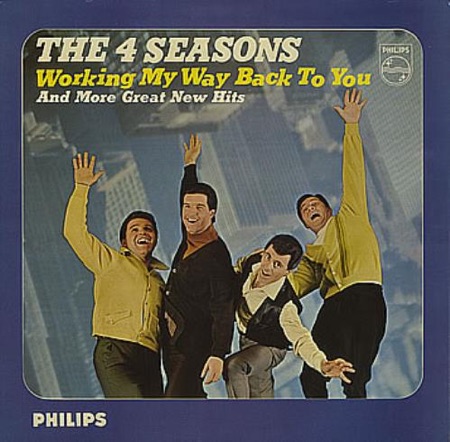
Die Jahreszeiten his other towering late oratorio is so rarely done that I pounced at recent chances to hear it twice: in November with the Philadelphia Orchestra and Yannick Nézet-Séguin at the Kimmel Center and on Wednesday night when the Cleveland Orchestra and Franz Welser-Möst visited Carnegie Hall.
Experiencing it twice after nearly a decade made me again wonder why performances are so few and far between. One reason might be traced back to Haydn’s lack of success in opera as the “characters” in them don’t often come alive.
Although the three soloists in Jahreszeiten have names—Hanne, Lukas and Simon—they don’t exactly portray people as much as types and there is no plot, drama or conflict per se. The trio function mostly as mouthpieces for the passionate evocation of the cycle of the seasons and gratitude to God that are the true subjects of the oratorio.
The four sections (each about 30 minutes) evoke a bucolic utopia where its inhabitants are ecstatically in touch with the natural world around them—the land, the animals and insects, the weather. The wind writing in particular achieves delightful mimetic effects. Sometimes there is a central action that dominates such as the fierce thunderstorm in “Summer” or the raucous hunting party in “Autumn.”
Haydn supplies his soloists and chorus with astonishingly vivid and charming music to express their awe of the wonders God has provided to mankind. The many complex choruses are particularly powerful; it’s hard not to be utterly transported by, for example, thrilling “O wie lieblich is der Anblick” that concludes “Spring!” which most resembles a great Handel chorus transformed by Haydn’s genius into something still more magnificent.
At the risk of being too deterministic, it did seem as if each conductor’s body language on the podium revealed all about their approach: Nézet-Séguin boundless kinetic energy; Welser-Möst lofty patrician grace. Cleveland’s sumptuously lush orchestra and huge full-throated chorus (119 listed in the program) strove for a spacious epic splendor whereas Philadelphia using smaller forces no less accomplished delivered a reading full of life highlighted by pleasingly transparent textures.
I often felt as if Nézet-Séguin saw the work as a culmination of the both the 18th century (the work premiered in 1801) and the classical period of music whereas Welser-Möst emphasized the more romantic aspects so much so that “Spring”’s overture sounded like Beethoven. These differences were also reflected in the continuo choices: a harpsichord in Philly but a fortepiano at Carnegie.
Oddly each conductor seemed to have the wrong set of singers at least as far as the sopranos and tenors were concerned, none of four I had ever heard in person before. The ethereal Hanne of Regula Mühlemann in Philadelphia might have suited Welser-Möst’s Apollonian vision better than Golda Schultz’s earthier, more sparkling interpretation.
Both revealed first-class lyric voices with Mühlemann glowing with heavenly purity while Schultz’s quick vibrato added entrancing shine particularly as the voice rose to high notes that flashed with gleaming fire. I am sorry to have missed the latter’s Met debut as Pamina in the fall and hope to hear her there sometime soon, perhaps as Sophie?
I had somehow never managed previously to catch Werner Güra, Nézet-Séguin’s Lukas, who is most noted lieder singer. As expected he revealed a particular care for the words and his high tenor soared with airy nonchalance. Maximilian Schmitt was a name I had only recently learned after he sang Florestan last fall in Beethoven’s Leonore with René Jacobs.
He brought a far less mellifluous sound than Güra had occasionally sounded tight and stressed. His bio revealed that he’s recently been performing Mahler’s Das Lied von der Erde, another sign that he’s heading in the direction of more dramatic music; on the other hand, he sings Pedrillo which might be a better match at the moment.
Taking a break from impersonating the dreary Oroveso in two batches of Norma at the Met, Matthew Rose was the most in tune of the three soloists with Nézet-Séguin’s rollicking and earthy approach. His full-bodied bass dealt with the part’s high and low extremes with ease and he skillfully negotiated the occasional florid bits.
If he hadn’t coughed with alarming regularity one might not have known that Christian Van Horn was sick as a dog at Carnegie Hall. As I had only previously heard him in smallish parts such as the hapless butler in this fall’s The Exterminating Angel at the Met, I was pleased to hear a splendid dark bass-baritone that rang out so elegantly and commandingly.
His was a rather more serious Simon than Rose’s and matched particularly well Welser-Möst’s sober reading. It would be great to hear him at the Met in roles more challenging than the Speaker, Colline and Pistola he’s been given so far.
If I had to choose I would say that I preferred Nézet-Séguin’s performance in Philadelphia for its leaner textures and Dionysian joy while I still appreciated Welser-Möst’s grander, sometimes overwhelming ideas. I can only hope it’s not another nine years before I get to again experience the four seasons NOT by Vivaldi.
Next season Gianandrea Noseda brings his Teatro Regio di Torino again to Carnegie Hall for I Vespri Siciliani but I doubt we’ll get Verdi’s “Quattro Stagioni” though.
For those who may have missed the Philadelphia or Cleveland Orchestra performances, two years ago “Trove Thursday” posted a delightful Jahreszeiten with Ileana Cotrubas, Francisco Araiza and José van Dam that is still available for listening or downloading.
There’s also a Haydn vocal potpourri as well.






Comments